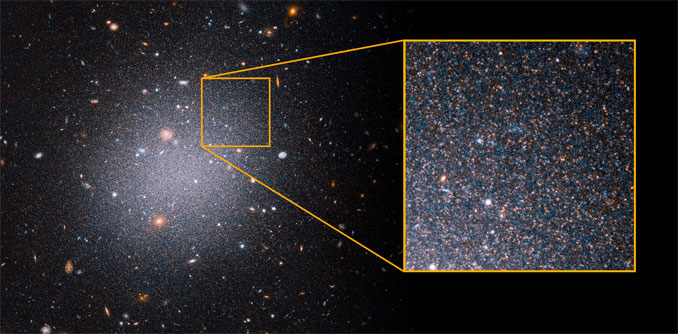
After going “out on a limb” claiming they’d found a galaxy with just a tiny bit of dark matter, astronomers has gathered additional evidence using the Hubble Space Telescope that shows the “weird galaxy” is most likely deficient in the sub-atomic glue thought to be a required ingredient in galaxy formation.
The galaxy in question, known as NGC 10520DF2, or DF2 for short, is almost as wide as the Milky Way but only contains about 1/200th as many stars. There are no obvious spiral arms, disk or a bright central region and its so diffuse background galaxies can be seen through it on the far side.
Astronomers initially estimated DF2 resided some 42 million light years from Earth. But in 2018, a team of researchers led by Pieter van Dokkum of Yale University used Hubble to precisely measure the brightness of red giant stars in the galaxy’s outskirts to come up with a distance of 65 light years.
Follow-on observations using Hubble’s Advanced Camera for Surveys have now stretched that distance out to 72 million light years. The distance, the intrinsic brightness of the stars and their velocities, governed by the total mass present, indicates dark matter may make up just a few percent of the total.
“For almost every galaxy we look at, we say that we can’t see most of the mass because it’s dark matter,” said van Dokkum. “What you see is only the tip of the iceberg with Hubble. But in this case, what you see is what you get. Hubble really shows the entire thing. That’s it. It’s not just the tip of the iceberg, it’s the whole iceberg.”



